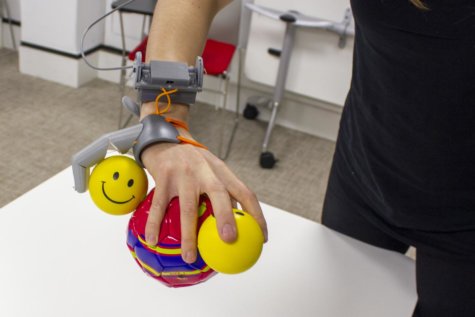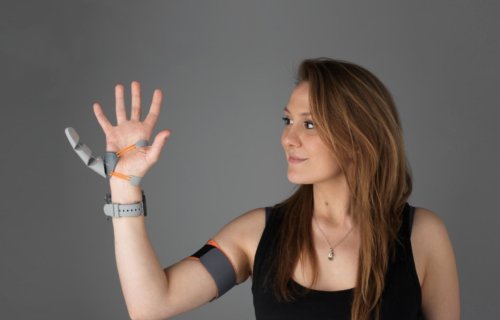LONDON — Do you sometimes need an extra pair of hands around the house? How about just two extra thumbs? It may sound like science fiction, but a new study finds the human brain could happily get used to having a sixth finger.
Researchers in London discovered participants testing out a device called the Third Thumb could perform challenging tasks easier using just one hand. Moreover, their brains also started to treat each finger on their hands more equally. Study authors say Third Thumb is moving the conversation of prosthetics beyond simple limb replacement and is now making it possible to enhance human ability.
“Body augmentation is a growing field aimed at extending our physical abilities, yet we lack a clear understanding of how our brains can adapt to it. By studying people using Dani’s cleverly-designed Third Thumb, we sought to answer key questions around whether the human brain can support an extra body part, and how the technology might impact our brain,” says Professor Tamar Makin from University College London in a release.
Third Thumb is the invention of designer Dani Clode. It is 3D-printed, which makes the device easy to customize for each user as it sits on the opposite side of the wearer’s normal thumb, near the pinky.
The device was part of an award-winning project at the Royal College of Art seeking to reshape the way people view prosthetics limbs. A UCL team of neuroscientists partnered with Clode to see how the brain could adapt to adding a sixth finger.
Would having an extra thumb really make life easier?

Participants wearing the Third Thumb control it using pressure sensors attached to the underside of their big toes. These sensors wirelessly connect to the thumb, with the wearer creating different movements by changing the pressure on their feet.
Researchers gathered 20 volunteers to try out Third Thumb for five days. The group could also take the device home to keep practicing in real life scenarios. In total, wearers used the prosthetic between two and six hours a day during the experiment. Study authors also compared their results to a group of 10 people wearing a non-functioning version of the Thumb who completed the same tasks.
During labs tests, participants performed tasks which helped to boost cooperation between their human hands and the robotic thumb. These exercises included picking up several balls or wine glasses and stacking blocks while only using one hand.
Results show the participants easily adapted to having an extra finger. Motor control, dexterity, and hand-Thumb coordination all improved during the training. The volunteers could even successfully control their Third Thumb while researchers distracted them with math problems or by blindfolding them.
“Our study shows that people can quickly learn to control an augmentation device and use it for their benefit, without overthinking. We saw that while using the Third Thumb, people changed their natural hand movements, and they also reported that the robotic thumb felt like part of their own body,” Dani Clode says.
How does the brain adapt to having six fingers?
Researchers also examined what working with a second thumb did to each participant’s brain activity using fMRI scans. On the hand not wearing the Third Thumb, the group moved each of their fingers one at a time while in the scanner.
Study authors discovered subtle but noticeable changes in how the brain’s sensorimotor cortex reacts to that hand in comparison to one wearing the extra digit. Specifically, on a hand with five fingers, moving each finger created a distinctly different signal. However, on a hand using the Third Thumb, brain activity related to moving each finger became increasingly similar.
Interestingly, these changes don’t last forever. Researchers discovered that a week after the experiment each participant’s brain scans returned to normal.
“Body augmentation could one day be valuable to society in numerous ways, such as enabling a surgeon to get by without an assistant, or a factory worker to work more efficiently. This line of work could revolutionize the concept of prosthetics, and it could help someone who permanently or temporarily can only use one hand, to do everything with that hand. But to get there, we need to continue researching the complicated, interdisciplinary questions of how these devices interact with our brains,” says study first author Paulina Kieliba.
“Evolution hasn’t prepared us to use an extra body part, and we have found that to extend our abilities in new and unexpected ways, the brain will need to adapt the representation of the biological body,” Prof. Makin concludes.
The study appears in the journal Science Robotics.

As a guitar player it sure would a fun option Not to mention the folks that really need em.